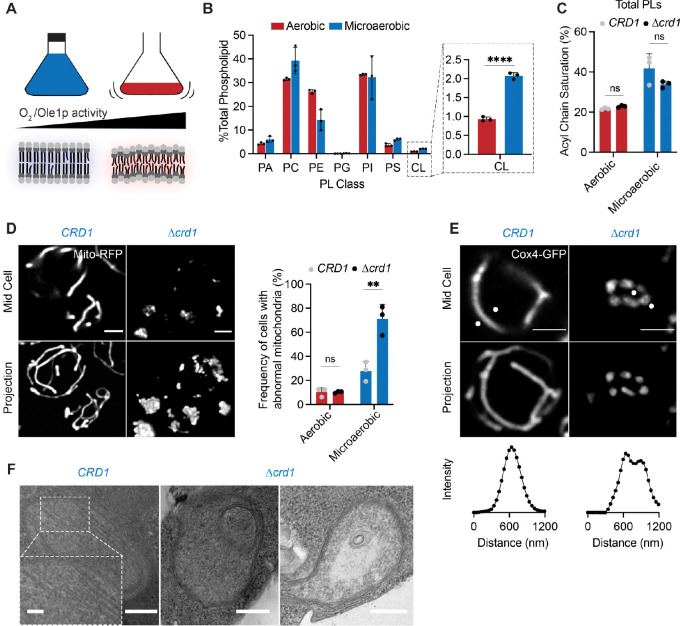Figure 6:
Cardiolipin synthesis is essential for mitochondria in yeast growth conditions characterized by low oxygenation.
(A) Schematic representation of different oxygen concentrations in different yeast growth environments. Microaerobic conditions cause increased saturation of membranes due to lower desaturate activity of Ole1p, an oxygen dependent enzyme.
(B) WT cells increase the abundance of CL under microaerobic conditions. Shown are abundances of each PL class, n=3. Error bars indicate SD. ****p < 0.0001, unpaired two-tailed t-test compared against wild-type.
(C) Microaerobic growth conditions cause an increase in acyl chain saturation in the total PL pool, which is not affected by loss of CL in Δcrd1 strains. Error bars indicate SD from n=3 biological replicates.
(D) Under microaerobic conditions, loss of CL (Δcrd1) causes loss of tubular mitochondrial structure. WT (CRD1) and Δcrd1 cells were grown in microaerobic chambers for 48 hours prior to imaging, n=3. Scale bars, 2 μm. **p < 0.005, unpaired two-tailed t-test compared against WT.
(E) Microaerobic Δcrd1 show hollow mitochondria, imaged with Cox4-GFP. Scale bars, 2 μm. Line profile analysis (below) depicts fluorescent intensity across the indicated mitochondria.
(F) Under microaerobic conditions, CRD1 cells contain long, sheet-like cristae structures while Δcrd1 cells lack cristae, and display both onion-like and flat abnormal IMM structures as visualized by thin-section TEM. Scale bars, 250 nm. Inset showing abundant cristae sheets in CRD1 cells, scale bar, 125 nm.

